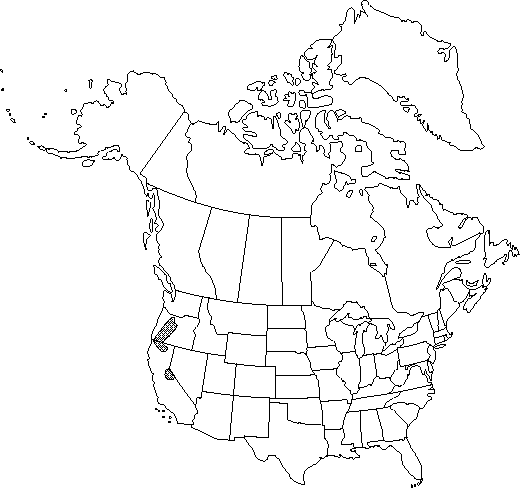Aconitum columbianum subsp. viviparum
Sida 16: 13. 1994.
Bulbils conspicuous in leaf-axils and sometimes in inflorescence in place of flowers. 2n=18, 19, 20.
Phenology: Flowering summer (Jul–Sep).
Habitat: Spring-fed bogs, seep areas, meadows, along streams, and other moist areas in mountains
Elevation: 900-2500 m
Discussion
One group of populations occurs in the Sierra Nevada, south of Lake Tahoe, in California. Another group of bulbiferous populations begins ca. 350 miles north in the Klamath Mountains of California and extends to northern Oregon in the Cascade Range. These bulbiferous populations form a geographically and morphologically distinct group. We have not noted intergradation between bulbiferous and nonbulbiferous subspecies of A. columbianum.
Bulbils are an effective means of vegetative reproduction. They fall to the ground late in the season and sprout vigorously, giving rise to new plants. Bulbil production should not be confused with the production of one to several small daughter tubers at the first few nodes above the parent tuber, usually below ground, which can occur on a small percentage of the plants in bulbiferous and nonbulbiferous populations. In other respects, these bulbiferous populations are similar to adjoining races of Aconitum columbianum subsp. columbianum.
Selected References
None.
Lower Taxa
"dm" is not declared as a valid unit of measurement for this property.

